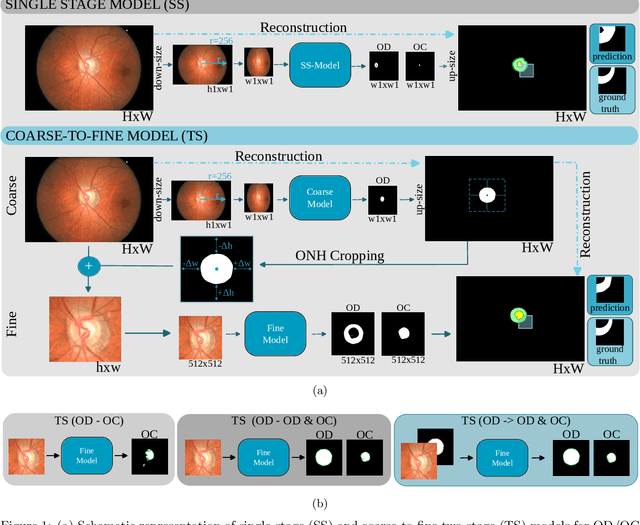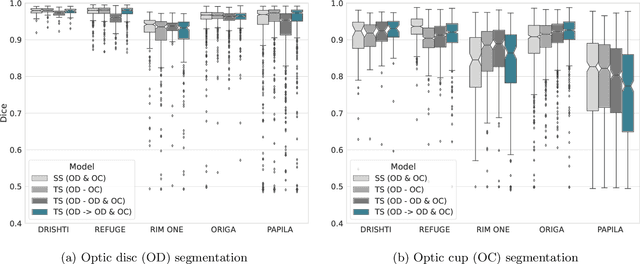Eugenia Moris
Evaluating sleep-stage classification: how age and early-late sleep affects classification performance
Oct 20, 2023Abstract:Sleep stage classification is a common method used by experts to monitor the quantity and quality of sleep in humans, but it is a time-consuming and labour-intensive task with high inter- and intra-observer variability. Using Wavelets for feature extraction and Random Forest for classification, an automatic sleep-stage classification method was sought and assessed. The age of the subjects, as well as the moment of sleep (early-night and late-night), were confronted to the performance of the classifier. From this study, we observed that these variables do affect the automatic model performance, improving the classification of some sleep stages and worsening others.
Assessing Coarse-to-Fine Deep Learning Models for Optic Disc and Cup Segmentation in Fundus Images
Sep 28, 2022



Abstract:Automated optic disc (OD) and optic cup (OC) segmentation in fundus images is relevant to efficiently measure the vertical cup-to-disc ratio (vCDR), a biomarker commonly used in ophthalmology to determine the degree of glaucomatous optic neuropathy. In general this is solved using coarse-to-fine deep learning algorithms in which a first stage approximates the OD and a second one uses a crop of this area to predict OD/OC masks. While this approach is widely applied in the literature, there are no studies analyzing its real contribution to the results. In this paper we present a comprehensive analysis of different coarse-to-fine designs for OD/OC segmentation using 5 public databases, both from a standard segmentation perspective and for estimating the vCDR for glaucoma assessment. Our analysis shows that these algorithms not necessarily outperfom standard multi-class single-stage models, especially when these are learned from sufficiently large and diverse training sets. Furthermore, we noticed that the coarse stage achieves better OD segmentation results than the fine one, and that providing OD supervision to the second stage is essential to ensure accurate OC masks. Moreover, both the single-stage and two-stage models trained on a multi-dataset setting showed results in pair or even better than other state-of-the-art alternatives, while ranking first in REFUGE for OD/OC segmentation. Finally, we evaluated the models for vCDR prediction in comparison with six ophthalmologists on a subset of AIROGS images, to understand them in the context of inter-observer variability. We noticed that vCDR estimates recovered both from single-stage and coarse-to-fine models can obtain good glaucoma detection results even when they are not highly correlated with manual measurements from experts.
 Add to Chrome
Add to Chrome Add to Firefox
Add to Firefox Add to Edge
Add to Edge